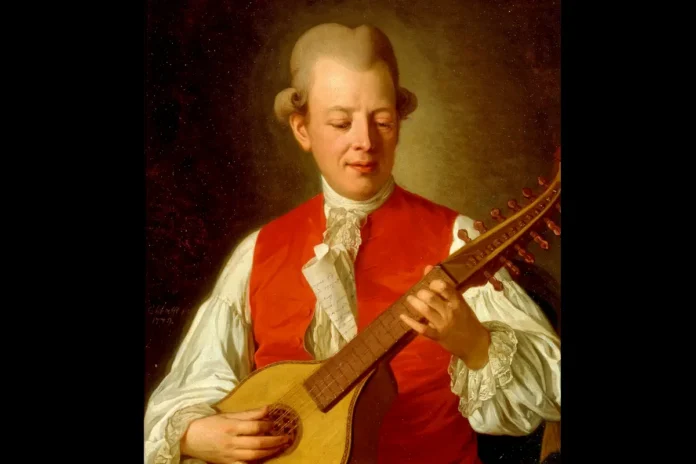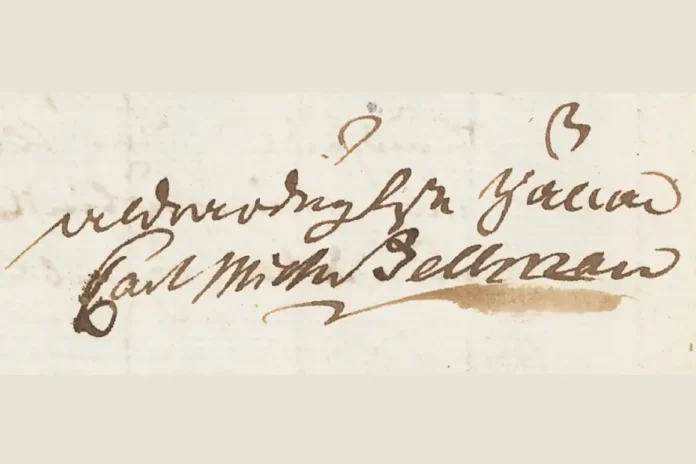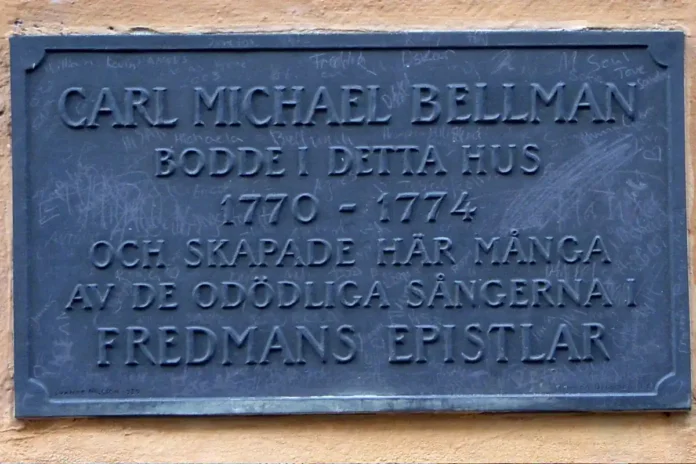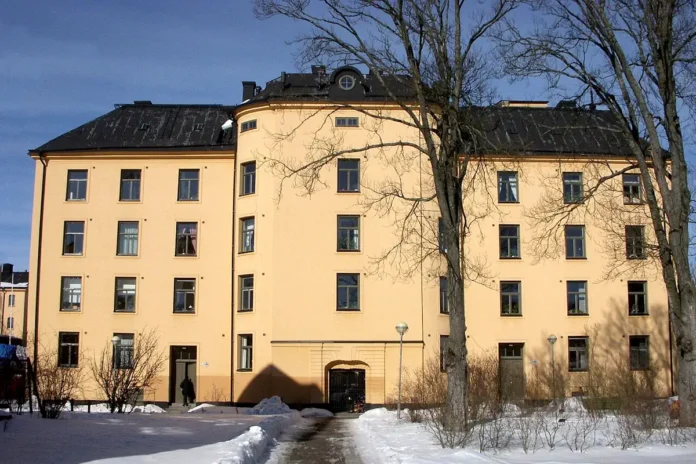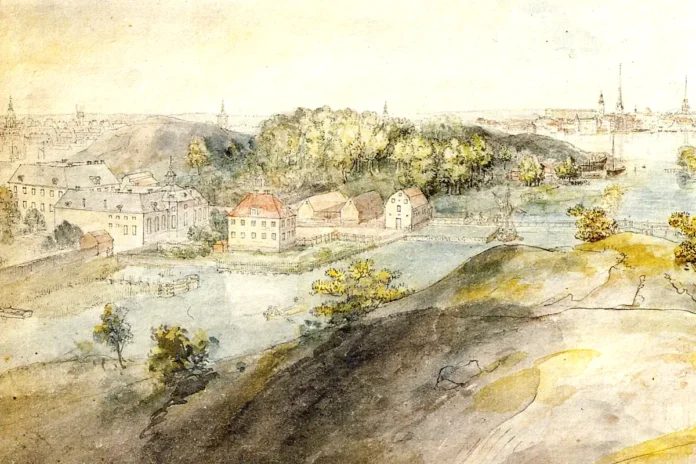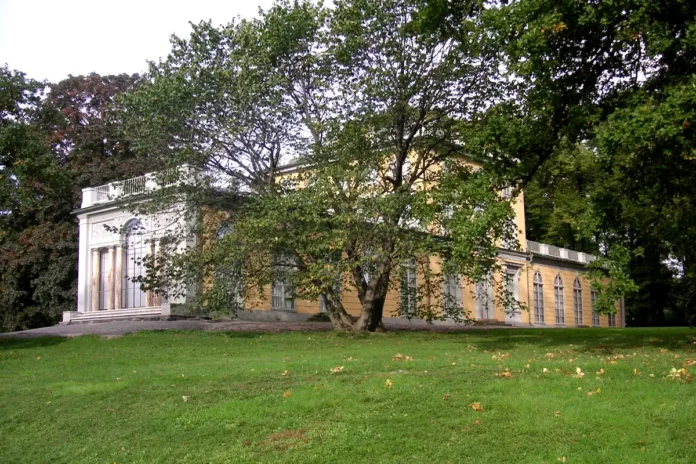Bellman: A journey through 18th-century Stockholm
Born in Stockholm on February 4, 1740, Carl Michael Bellman is a legendary figure in Swedish music and literature. His life and works offer a fascinating glimpse into Stockholm in the eighteenth century, making him a crucial figure for tourists interested in the city’s rich cultural heritage.
Life in Stockholm
Bellman spent his entire life in Stockholm, growing up in the Södermalm district. He was the oldest of fifteen siblings, but many of them did not survive childhood. Bellman was raised in an environment of both privilege and adversity; his father was a civil servant, but the family never had much money.
His songwriting was greatly impacted by his experiences in Stockholm’s busy streets and lively social scene. Bellman often depicts scenes from daily life in his lyrics, which capture the essence of the city at the time. Notably, he provided a unique window into the past by preserving historical locations and personalities from eighteenth-century Stockholm in his songs.
Contributions in music
Fredman’s Songs (Fredmans sånger) and Fredman’s Epistles (Fredmans epistlar) are Bellman’s two most well-known collections. These pieces consist of about 70 songs, often about drinking and partying, and range from humorous to melancholic. His ability to blend poetry and music has drawn comparisons with the likes of Shakespeare and Mozart.
His principal instrument was the cittern, and he rose to prominence as one of Sweden’s most accomplished cittern players. In order to make his songs relatable and approachable for his audience, he regularly appropriated melodies from songs that were popular at the time. “Gubben Noak” and “Fjäriln vingad” are two of his best-known compositions that still have an impact on Swedes today.
Cultural influence
Carl Michael Bellman’s contributions have had a lasting impact on Swedish society. His songs are performed not only in Sweden but have also been translated into English and German, demonstrating their universal appeal. The complexities of love and social status in that era are captured by Ulla Winblad, who is often depicted in his songs as a tragic yet alluring figure.
Locations associated with Carl Michael Bellman
It is true that Carl Michael Bellman’s life and works are strongly influenced by Stockholm, and visiting these sites provides a deep understanding of both his legacy and the cultural milieu of Sweden in the eighteenth century. Bellman, who is well-known for his lyrical and musical compositions, frequently took inspiration from Stockholm’s social scenes and daily life to capture the essence of the city in his writings and songs.
1. Bellmanhuset
From 1770 until 1774, Bellman lived at Bellmanhuset, which is situated at Urvädersgränd 3 in Södermalm. The poet wrote a large portion of Fredman’s Epistles in this historic building, which makes it noteworthy. Bellman’s memory is preserved by the Par Bricole Society, which currently owns the house. Guided tours are available on the first Sunday of each month, providing insights into his life and music.
2. Långholmen and Stora Henriksvik (Bellman Museum)
A small museum devoted to Bellman can be found in Stora Henriksvik on Långholmen. Due to its use as a customs house during Bellman’s lifetime and its mention in his work Fredmans Epistle No. 48, this location was historically significant. For those interested in Bellman’s songs and the cultural background of his time, the museum is a pleasant stop because it has a lovely café and garden.
Bellman makes frequent references to Långholmen Island in his poetry, especially in relation to the spinning house that is mentioned in Fredman’s Epistles. Långholmens spinnhus was a women’s prison, established in 1649, where incarcerated women were forced to spin thread and perform other labor. Despite its transformation into a recreational space, Bellman’s life and contributions maintain the island’s historical significance.
3. Gamla Stan (Old Town)
Bellman was a frequent visitor to Gamla Stan, which has a rich history and winding alleys. Visitors can experience the atmosphere that inspired his work by taking walking tours that frequently highlight the places mentioned in his songs. Among the notable locations are Källaren Gyldene Freden, a fabled tavern that Bellman visited and that appears in his poetry.
4. Haga Slott
Another location connected to Bellman is Haga Slott and Gustav III’s pavilion, which is situated just north of Stockholm. During Bellman’s lifetime, King Gustav III, a patron of the arts, had a fondness for it. The beauty that served as inspiration for many of Bellman’s pieces is reflected in the picturesque park that encircles the palace.
5. Stockholm City Museum
Insights into Carl Michael Bellman’s life and times are among the historical and cultural exhibitions on display at the Stockholm City Museum.
Legacy of Carl Michael Bellman
Despite facing significant personal challenges, including financial hardships that led to periods of imprisonment due to debt, Bellman’s legacy endures. He passed away on February 11, 1795, leaving behind a wealth of poetry and music that still impacts contemporary Swedish artists. He is a crucial figure for anyone interested in Stockholm’s cultural past because of his ability to convey the essence of the city through his artwork.
Exploring Carl Michael Bellman’s life gives visitors to Stockholm a greater understanding of the city’s colorful past in addition to an appreciation of his artistic talent. Engaging with Bellman’s legacy, whether through guided tours or visiting locations associated with his life, is a rewarding experience that puts tourists at the center of Swedish culture.


